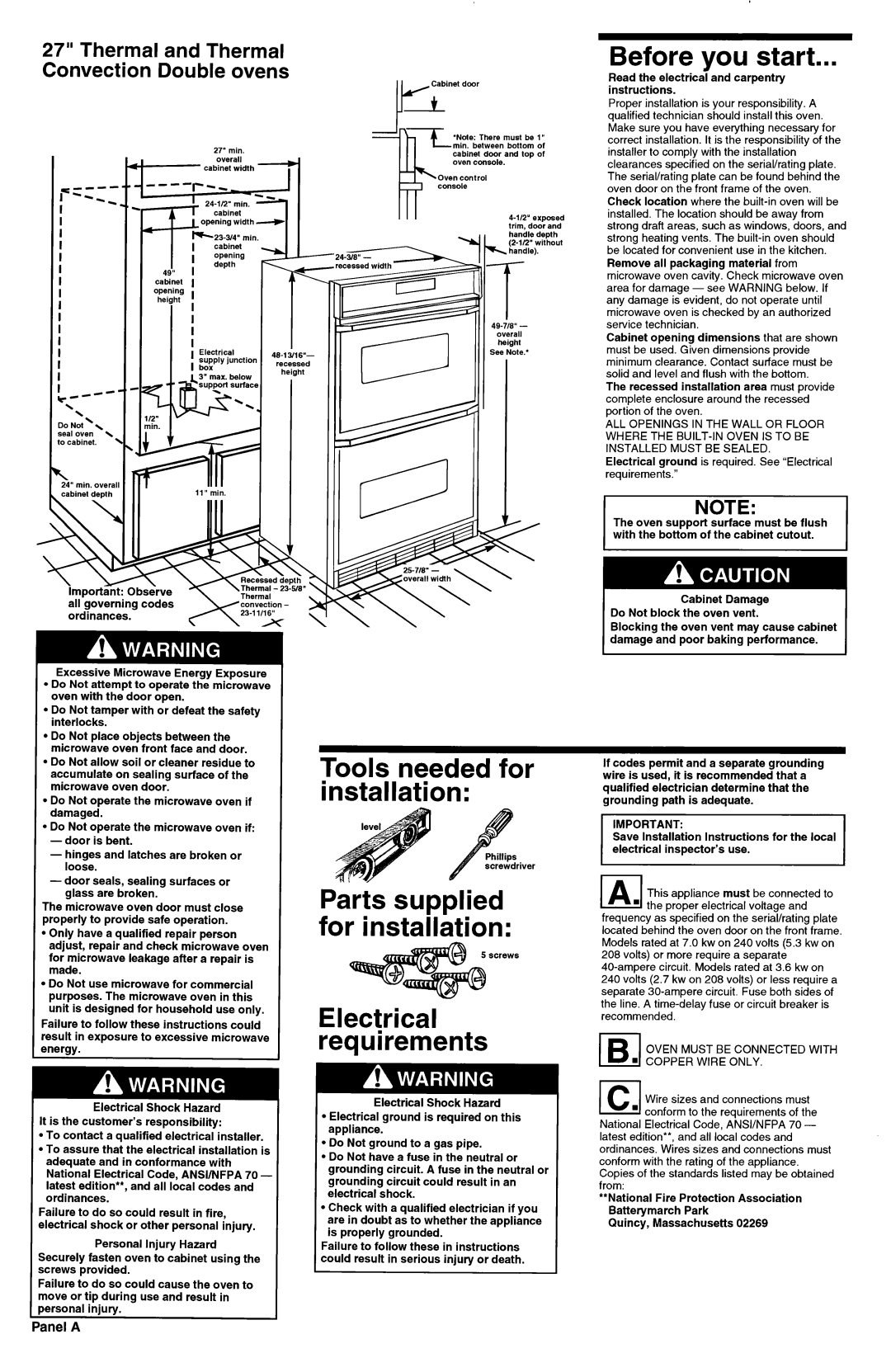3184435 REV. A specifications
The KitchenAid 3184435 REV. A is a remarkable appliance designed to enhance culinary experiences in the kitchen. Known for its durability and efficiency, this model offers a variety of features that cater to both novice cooks and culinary experts.One of the main features of the KitchenAid 3184435 REV. A is its powerful motor, which ensures consistent performance whether mixing, kneading, or whipping. This robust motor is designed to handle heavy doughs with ease, making it an excellent choice for bread makers and pastry chefs alike. Its strong mixing capabilities allow for thorough blending of ingredients, which is essential for achieving the perfect consistency in batters and doughs.
Another standout characteristic of this KitchenAid model is its versatile speed settings. With multiple speed options, users can adjust the mixing intensity to suit their specific requirements. From gentle folding to high-speed whipping, the KitchenAid 3184435 REV. A offers precise control over mixing processes, which is crucial for achieving desired outcomes in cooking and baking.
The design of the KitchenAid 3184435 REV. A is not only functional but also aesthetically pleasing. The sleek finish and compact form make it an attractive addition to any kitchen countertop. Additionally, the appliance is built with high-quality materials, ensuring longevity and resistance to wear and tear. This durability is complemented by a warranty that provides consumers with peace of mind.
Technology also plays a significant role in the performance of the KitchenAid 3184435 REV. A. Features such as an ergonomic handle facilitate easy operation, while the bowl-lift mechanism provides stability during mixing. This technology not only enhances user experience but also contributes to safety during high-speed mixing tasks.
Cleaning and maintenance are made simple with this model, as the removable parts are dishwasher safe. This convenience allows users to spend more time enjoying their culinary creations rather than worrying about cleanup.
In conclusion, the KitchenAid 3184435 REV. A is an exceptional appliance that combines power, versatility, and thoughtful design. With its standout features and advanced technologies, it is a testament to KitchenAid's commitment to providing quality kitchen solutions that enhance the cooking experience for everyone. Whether you are a seasoned chef or a beginner, this model is sure to deliver reliable performance for all your culinary adventures.

